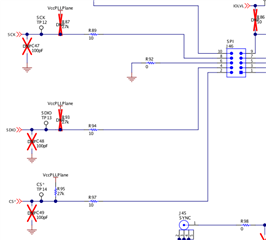Other Parts Discussed in Thread: USB2ANY, LMK04832
To program the LMK04832EVM, TI recomends using the TICS Pro software and the USB2ANY. However, I would like to program it using a smaller device, like a raspberry pi. Does anyone have a Python or C script that is able to program the LMK using the raspberry pi? Also, if possible, please share how your pins are connected from the raspberry pi to the LMK device. I have the register values to be written to the LMK, but I don't have a working script that can communicate and send the values to the device. I have tried many ways but have not been successful yet, so it'll be great if someone can help me. Thanks a lot in advance!


